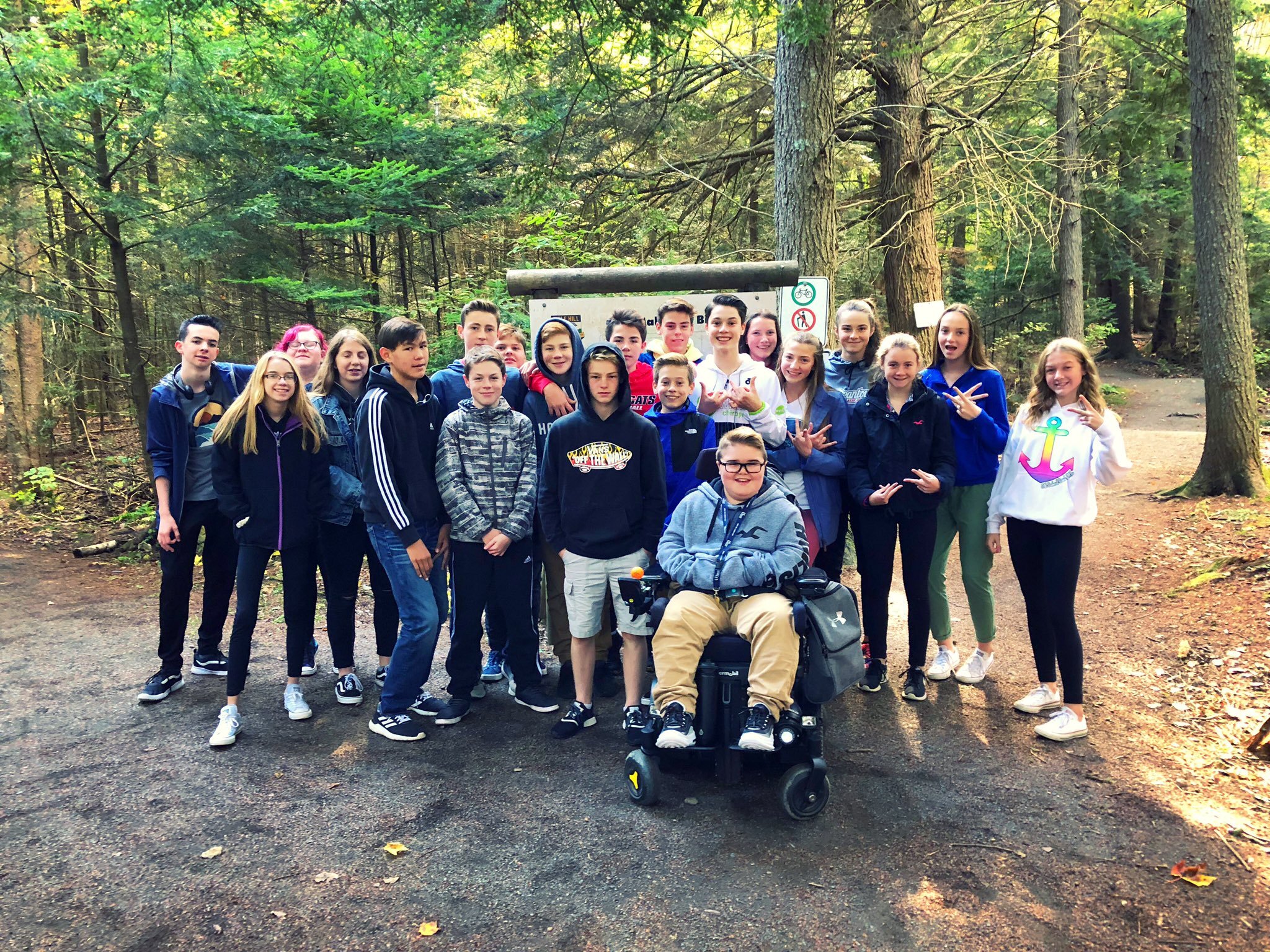Session A:
Introduction & Community Building
Photo Credit: Vikki MacLaughlin
Outcomes
(Knowing (K), Doing (D), Valuing (V))
K: Walking can help me stay healthy and active.
K: Walking is a great way to help the environment.
D: I can play fair with others.
D: I can communicate well with others.
D: I show respect for others.
V: I appreciate the environment and help protect it by walking to and from places.
V: Walking helps me build friendships.
Suggestions for Teaching
Several days before the first session begins, the “Program at a Glance” Form should be completed. The Pre-Planning Checklist should also be completed beforehand to ensure that the session is prepared and ready to be delivered in a safe and effective manner. The Pre-Planning checklist should be completed before each session is delivered. This checklist requires that parents/caregivers submit their child’s Informed Consent and Medical Information Forms to the teacher. These documents should be recorded on the Session A Duty Form.
As this is the first session of Making Tracks: Walking Safety, it is especially important to establish with the participants how the program will be delivered. You will need to provide them with more detailed information in this session than in other sessions.
Begin by introducing yourself and ask each participant to say their name aloud and one reason why they are excited about taking Making Tracks: Walking Safety.
Provide the participants with a very brief overview of what you will be doing in the session. You could say, “As you know the aim of the Making Tracks: Walking Safety is to encourage you all to be more active and safe walkers. So, in our first session today we will get active but there are a few things I need you to know. First, we will talk a little about how important it is to show each other respect when we are working together. Next, I will talk about how I will give you feedback so you learn to be more active and safe walkers. Then, we will spend most of our time doing four different activities to help us all get to know one another.”
Briefly talk about your expectations and the importance of respect when working together. Ask the participants what respect means to them. You could provide examples such as listening when others are speaking, not pushing each other inappropriately, etc.
Next, quickly explain to the participants how they will be assessed (i.e., how you will give feedback to them). The first thing you should say is that every day they will work towards meeting different outcomes and today they are working on meeting these ones:
Walking can help me stay healthy and active.
Walking is a great way to help the environment.
I play fair with others.
I communicate well with others.
I show respect for others.
I appreciate the environment and help protect it by walking to and from places.
Walking helps me build friendships.
Then, tell the participants that you will use verbal (spoken) feedback and written feedback. Tell them that as they do activities you will give verbal feedback by using the words “getting there,” “almost there,” and “there.” Also tell them that these words will help them know if they are meeting the outcomes. Then tell the participants that at the end of each session you will provide written feedback to each of them. This will be in the form of a booklet called a Passport. Show them a copy of what one looks like. Tell them that instead of saying the words “getting there,” “almost there,” and “there,” that in their Passports you will draw parts of or full happy faces. A circle means “getting there,” a circle with two eyes means “almost there,” and a full happy face means “there.”
Lastly, let them know that these Passports need to go home at the end of the session and ask the participants to talk with their parents/caregivers about what they learned. Remind them that their Passports must be signed by their parents/caregivers and then returned the following session.
• Let participants know that they will be monitored during the session using the In-Session Monitoring Checklist (Appendix E.2.) and that this will be standard procedure for every session. This checklist is used to ensure best practices during each session regarding safety, preparedness, materials and teaching methods.
Do the four community building activities.
Complete the participants’ Passports and send them home with the participants before you dismiss them.
At the end of this session, the Post-Session Follow-Up Checklist should be completed to improve on best practices during each proceeding session regarding safety, preparedness, materials and teaching methods.
*Remember this will be your first time meeting with the program participants so it is important for them to have an opportunity to become comfortable with one another and with you. Focus on creating a fun atmosphere where participants feel secure and safe. Do not worry about getting to content-specific activities or materials yet; now is the time for you all to get to know one another and have fun!
Debrief
The teacher leading the program should complete a Passport for each participant.
Participants should then bring home their Passports to discuss and show their parents/caregivers what they learned.
At home, participants should be encouraged to discuss:
The importance of walking places
The names of three new people they met today
a Participants must also get their parents/caregivers to initial their Passports, which need to be brought with them when they attend the next session.

